

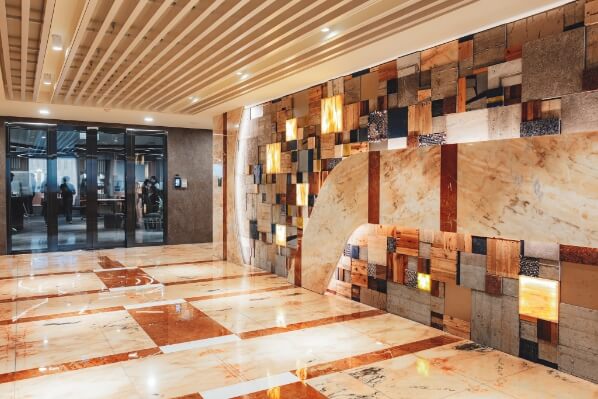
Construction Waste Upcycling Project 2.0—Floor Image
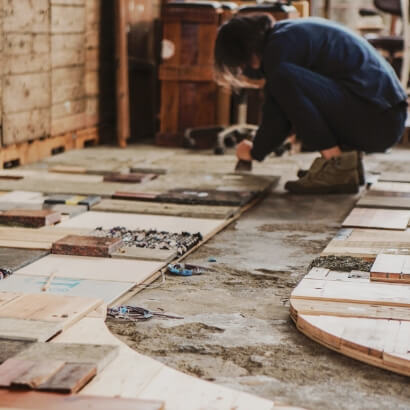
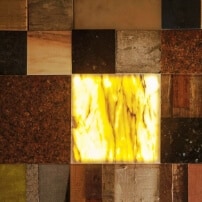
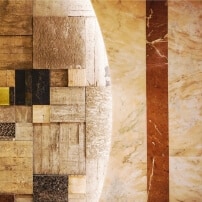


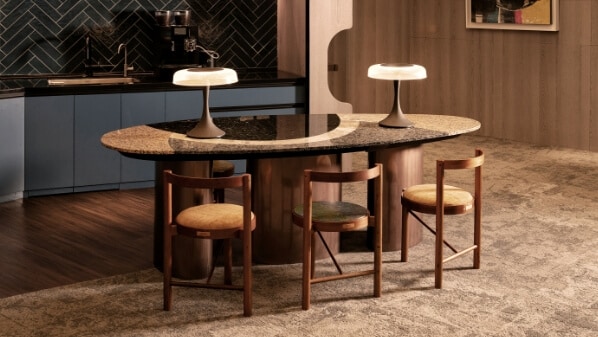


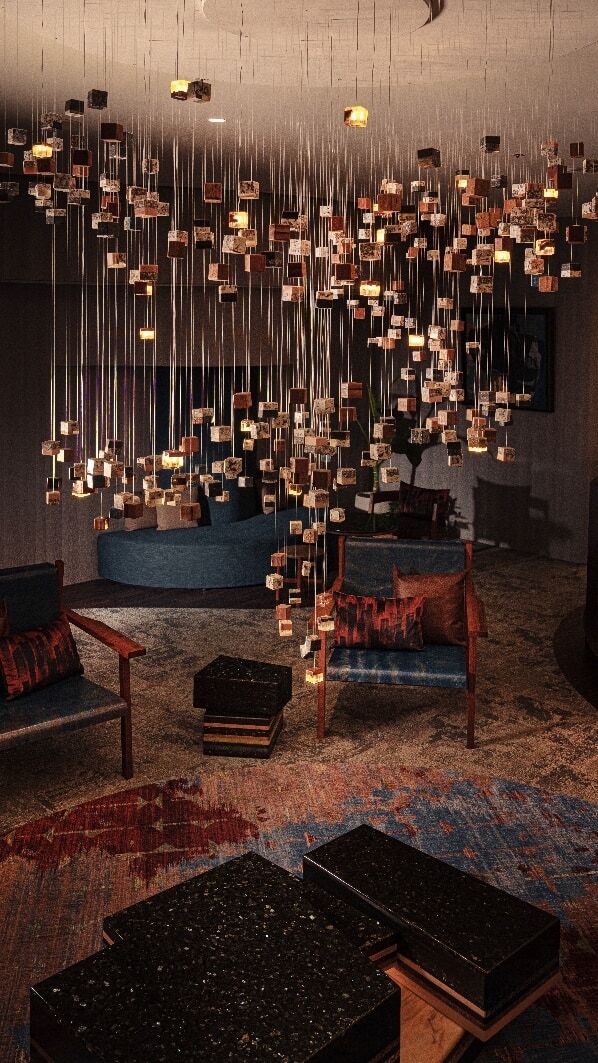

Firewood (end tables) waiting to be placed in the campfire Since they are farther away from the campfire table, mushrooms (lights) have emerged due to the humidity
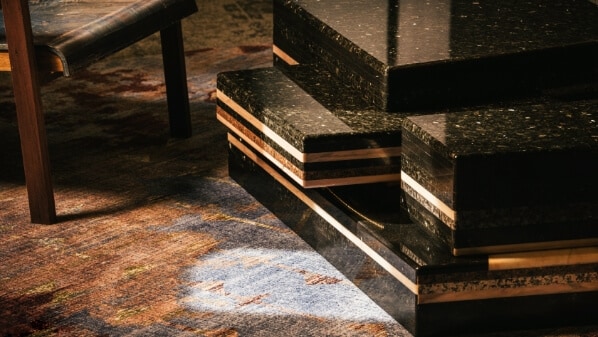


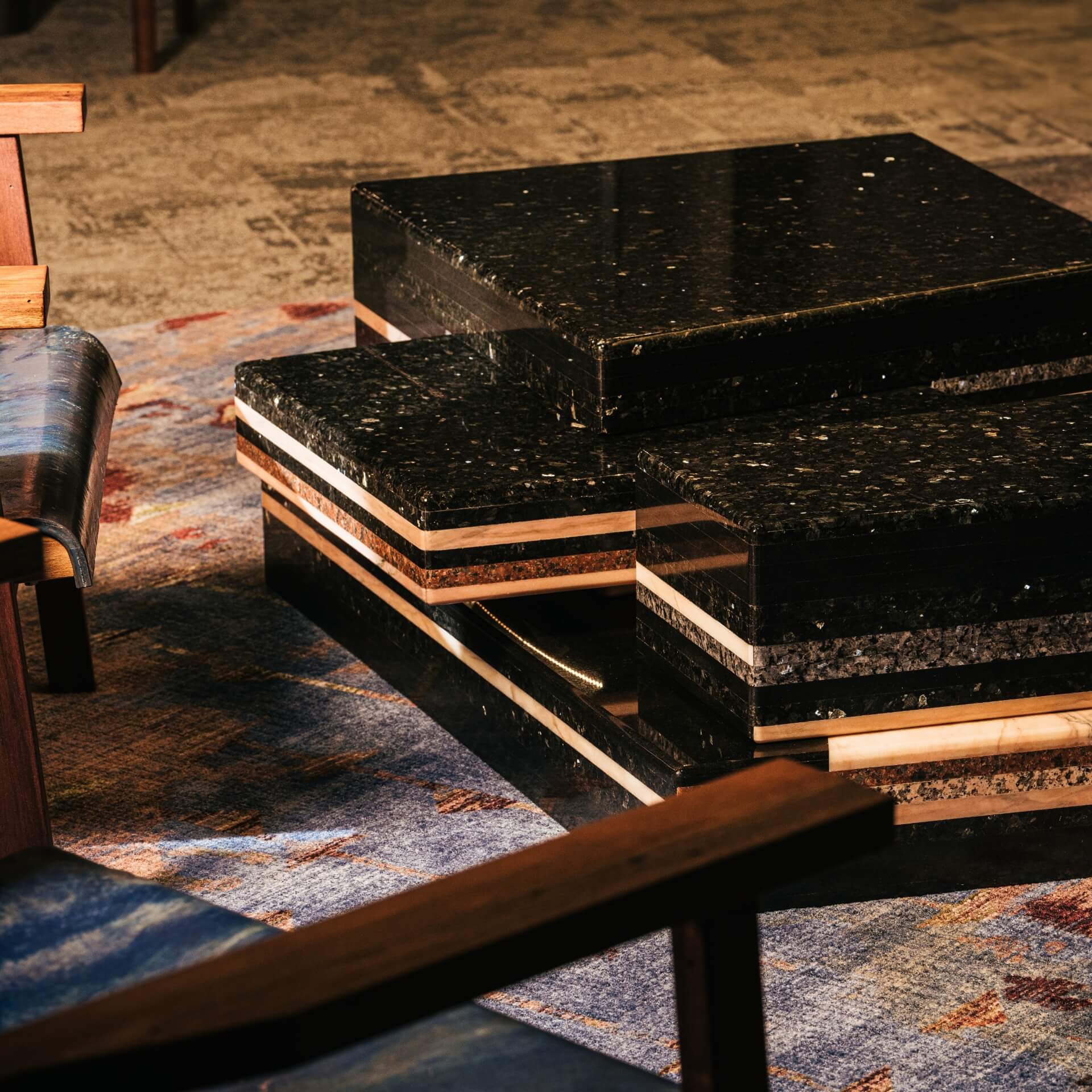
The chair is made from discarded formwork from a construction site, and the nail holes on its surface have been kept. The structure is an homage to the I-beam, which is used as scaffolding at construction sites.
The chair is made from discarded formwork from a construction site, and the nail holes on its surface have been kept. The structure is an homage to the I-beam, which is used as scaffolding at construction sites.
Left click to spin, and right click to drag
逆
逆
Pieces of stone removed during the renovation of the stairwells on each floor were recycled and re-cut for a new design.
The seats of the chairs are made of two different materials. They are either made of recycled boards made from pressed debris nets, or rust-dyed cotton seat cushions whose patterns come from rubbings of leftover construction site materials. A seat with a choice of two materials is the best kind of proof for the transformation that can happen through the Construction Waste Upcycling Project.
Left click to spin, and right click to drag
逆
逆
view more
Object location24F
Collaborative Production Team
META Design

Material source:
Ordinary residential project
Material features:
This was assembled using discarded formwork, pallets, rebar, cement, and iron parts from construction sites.
The frame of the clock is made of pieces of wood from used pallets which were re-cut to form the frame, while the panel is made by filling the frame with cement left over after pouring was completed.
The details of the clock reveal ingenious touches, such as the hands, which are made of a piece of scrap rebar that was cut thinly; and the numbers, which are made of small recycled iron parts from a construction site.
#ConstructionWasteUpcyclingProject2.0
#OrdinaryResidentialProjectConstructionWaste
